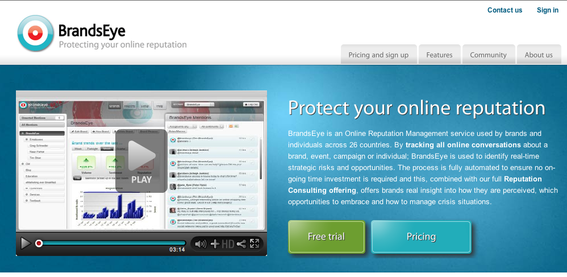Editor’s Note: One of the marketing challenges faced by ecommerce merchants is finding online communities that have an interest in the merchants’ products. Few observers dispute the potential of social media, provided merchants can find interested parties to be social with.
We posed this challenge to Paul Chaney, Practical eCommerce’s social media director. We asked him, “How do merchants find online communities that are interested in their products?” His answer follows, below.
There are a number of ways merchants can find communities that would be interested in their products. Here are five.
1. Start by Listening
The best place to start is by conducting an online monitoring campaign. By that I mean, “Start by listening.” Consumers are talking to each other and are using social networks and online communities to carry on those conversations. Through the use of sophisticated, yet inexpensive, monitoring tools such as Trackur or Brandseye, you can find where those conversations are taking place. These tools scour the social web — blogs, social networks, forums, discussion groups, micro-blogs and online communities — to find references to your company and its products.
Brandseye can help locate online discussions about an industry and its products.
Alternatively, you can create a do-it-yourself monitoring campaign by subscribing to Google alerts and Twitter searches for relevant keywords, such as company name, product names, and even names of competitors. However, I refer to this as the “Swiss cheese” approach. While you will catch some references, you are going to miss others that a tool specifically designed for this purpose would capture.
2. Facebook Targeting Options
By initiating an online monitoring campaign, you begin a discovery process that will lead to finding people who are interested in what you have to sell. There are other ways, however, in which to define your target market. Facebook, the largest social network, offers some of the most precise targeting I have seen.
For the most part, these targeting options are tied to Facebook advertising.
Aside from that, you can use Facebook Search to find individuals, groups and Fan pages that match your criteria. Also, there is a new app, Likester, that allows users to search Facebook Likes. Likes are related to people’s interests and Likester has the potential to unlock a wealth of marketing research data.
Likester tracks Facebook Likes.
3. LinkedIn Advanced Targeting
If your target market is other businesses, then LinkedIn can be a real boon. Not only are there many groups covering almost every industry or topic, LinkedIn’s Advanced Search enables you to drill down deeply to find the right people who could need what you have to offer.
4. Become an Active Participant
One of the best ways to mine social media channels is to become an active participant in its ecosystem using tools like Facebook, Twitter and LinkedIn. Often, when I need to find something, I ask my friends and followers. You would be amazed at how much information can be gleaned through the simple act of making a request.
5. Google It
Another tried-and-true method to find relevant communities is through a Google search. While it’s almost certain that irrelevant returns will be included, I suspect you will find some that meet your criteria as well — though you may have to dig down a few pages to do so.
Summary
Start with one of these five options, then move on to the others gradually over time. As you begin to peel back the layers of the social media onion, I feel certain you will uncover the communities of practice that best fit your target market.




